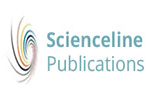(2024) The Influence of Mannan Oligosaccharides and Beta Glucan Supplementation on Growth Performance, Blood Constituents, and Cecal Parameters of Broiler Chickens. World's Veterinary Journal. pp. 74-84. ISSN 2322-4568
|
Text
WVJ14(1)74-84,March25,2024.pdf - Published Version Download (906kB) |
Abstract
Growth promoters in poultry feed have been under severe attention since antibiotics were banned for use in animal diets by the European Union. Thus, it has been important for poultry researchers to find alternatives to antibiotic growth promoters (AGPs) to boost the health and production performance of poultry. This research was conducted to evaluate the effects of adding ALTIMOS® (cell wall of Saccharomyces cerevisiae; mannan oligosaccharides MOS + beta-glucan BG) to broiler diets on productive performance, blood parameters, intestine histopathology, and cecum microbiota of broiler chicken. A total of 252 one-day-old Ross chicks were randomly selected and divided into seven treatments, with six replicates of each treatment. The treatments were the control group (0% feed additives), and groups that received 0.05, 0.125, 0.250, 0.500, 1.0, and 2.0 g MOS+BG /kg basal diet for 35 days feeding trial. The results showed that during most trial periods, the group fed the basal diet supplemented with 1.0 g MOS+BG/kg had the highest body weight and weight gain, as well as the lowest feed consumption and best feed conversion ratio, compared to other treated groups. Moreover, this group had the best productive performance in the accumulative period. The inclusion of MOS+BG at 1.0 g/kg diet showed no significant effect on carcass percent compared to the control group. In addition, the inclusion of MOS+BG at 1.0 g/kg diet resulted in the lowest count of Escherichia coli and Enterococcus in the cecum, the highest Lactobacillus bacteria count among all experimental treatments, and a higher yeast count compared to the control group. The group fed 1.0 g MOS+BG/kg ration had the lowest blood cholesterol, whereas there were no significant differences among all experimental groups in the measured liver functions. Notably, the Hemoglobin percentage in the group fed MOS+BG at 1.0 g/kg feed was the highest. In the group fed 1.0 and 2.0 g MOS+BG/kg, the intestinal villi length was longer, and the histopathology revealed mild alteration. Overall, the supplementation of 1.0 g MOS+BG/kg diet improved growth performance, blood constituents, and cecum’s beneficial bacteria counts of broilers. © The Author(s) 2024. All Rights Reserved.
| Item Type: | Article |
|---|---|
| Keywords: | beta glucan; cholesterol; hemoglobin; mannan; mannose oligosaccharide, altimos; animal experiment; animal tissue; Article; bacterial count; blood cell count; blood component; body weight gain; broiler; carcass; cecum; chick; cholesterol blood level; controlled study; diet supplementation; dietary intake; dietary supplement; economic efficiency; Enterococcus; eosinophil; erythrocyte; Escherichia coli; evaluation research; feed conversion ratio; food intake; growth performance; growth rate; hematological parameters; hemoglobin blood level; histopathology; intestine; intestine flora; intestine villus; Lactobacillus; leukocyte; liver function; lymphocyte; monocyte; morphometry; neutrophil; nonhuman; organ weight; yeast |
| Subjects: | S Agriculture > SF Animal culture |
| Divisions: | World's Veterinary Journal (WVJ) |
| Page Range: | pp. 74-84 |
| Journal or Publication Title: | World's Veterinary Journal |
| Journal Index: | Scopus |
| Volume: | 14 |
| Number: | 1 |
| Publisher: | Scienceline Publication, Ltd |
| Identification Number: | https://doi.org/10.54203/scil.2024.wvj10 |
| ISSN: | 2322-4568 |
| Depositing User: | Dr. Alireza Sadeghi |
| URI: | http://eprints.science-line.com/id/eprint/1211 |
Actions (login required)
 |
View Item |


 Dimensions
Dimensions Dimensions
Dimensions